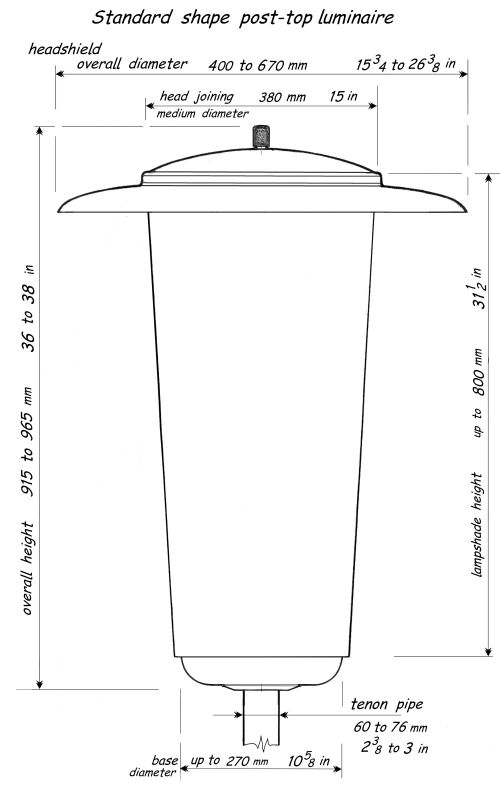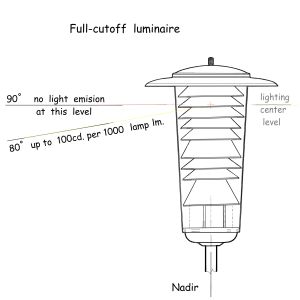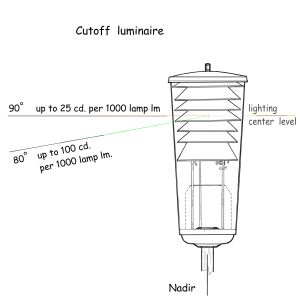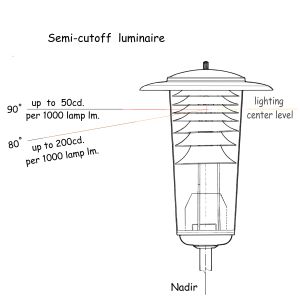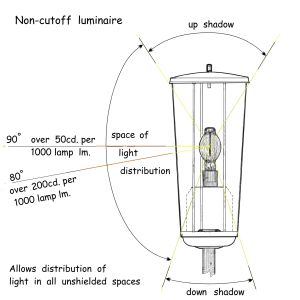Support this website by joining the Silver Rails TrainWeb Club for as little as $1 per month.
Click here for info.
This website has been archived from TrainWeb.org/railway-platform-posttop to TrainWeb.US/railway-platform-posttop.
STANDARD TALL TRUNK-CONICAL POST-TOP LUMINAIRES
Assembly lateral view
Cutoff classification
The only way to predict this Cutoff level is through a true evaluation in a speciality laboratory, under tightly controlled conditions for certifying the luminaire's Cutoff level.
This is true for the completely assembled luminaire with lampshade and cut-off shields included during the evaluation.
Optimal luminaire mounting height - 3.35 to 3.65 meters or 11 to 12 feet up to pole's tenon.
Solutions for luminaries interior design
Cutoff and other optics ( interior surface of lampshade ) may be designed according to lamp wattage and lampholder position within the lampshade, for being optimal at this mounting height. The most required Cutoff level is "Full-Cutoff", or at least the "Cutoff" one. "Semi-Cutoff" level may be used for low lumen output.
The large interior space allows a lot of cut-off shields combinations. So, for a "good-neighbour" usage, cutoff shields may be unsymmetrically designed not to allow the light emission to a nearby neighbourhood where the light is not allowed. Even a vertical shield may be posted within the lampshade near the interior surface.
If a lower vertical (base down) burning position of lamp is chosen, both control gear and lampholder may be fixed on the fixing frame. If a higher lamp burning position, or lamps having "base-up" burning position are chosen, it is required the lampholder-fixing-flange fixed on one of the rods.
A highly efficient low pressure ( "base-up" burning position ) sodium lamp may be used both for common or asymmetrical cut-off shields. Lampholder may be inclined indifferent of cut-off kind.
A compact fluorescent lamp is also suitable for this kind of luminaire. More common tubular fluorescent vertically positioned lamps (up to 8 pieces of different light colour ) may be used for a blended light colour effect.
Two common HID lamps may be also used for obtaining a higher intensity blended colour effect .
For instance : a sodium lamp up positioned and a mercury or coloured metal-halide for down-positioned ; two coloured metal-halide lamps. A HID lamp and a quick-start lamp ,... or other possible lamp combinations .
All kinds of HID ( mercury, sodium, metal-halide ) lamps ( having "base-up" and "base-down" burning positions ) are very suitable.
Fixing flanges are designed to join E27, E40, Medium or Mogul lampholder, or those for SOX or compact fluorescent lamps ( BY22D , 2G11 ).
Other new kinds of lamp ( cold-kathode, induction lamps...) may be used too.
The large interior space of lampshade allows the use of the lamps (bulbs) with asymmetrical light spreading, especially for "good-neighbour" lighting.
Examples of interior design
- cut-off shields, kinds of lamps, lampholder positioning, control gear ( ballasts, igniters, dimmers,... ) and electrical connection reserved space.
|
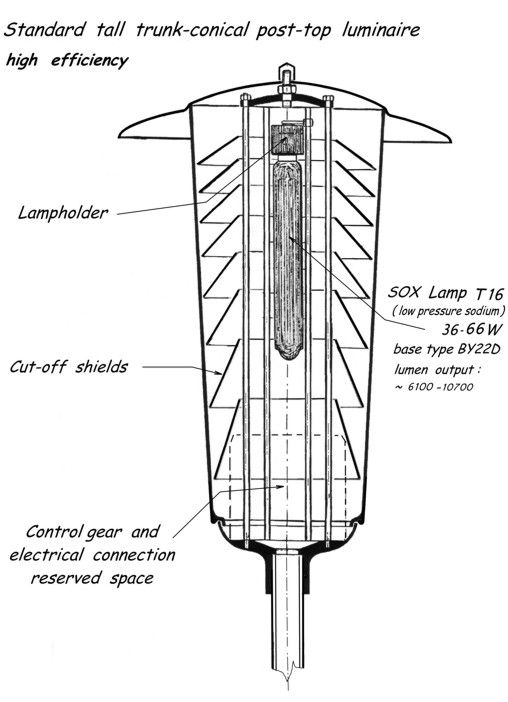
|
|
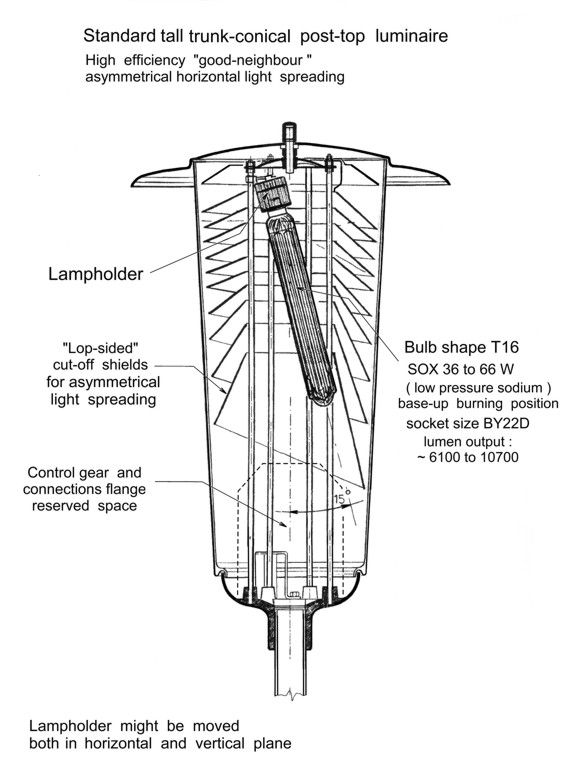
|
|
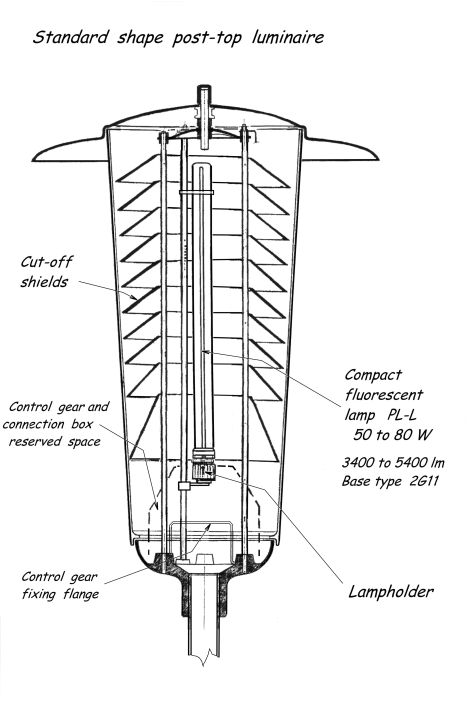
|
|
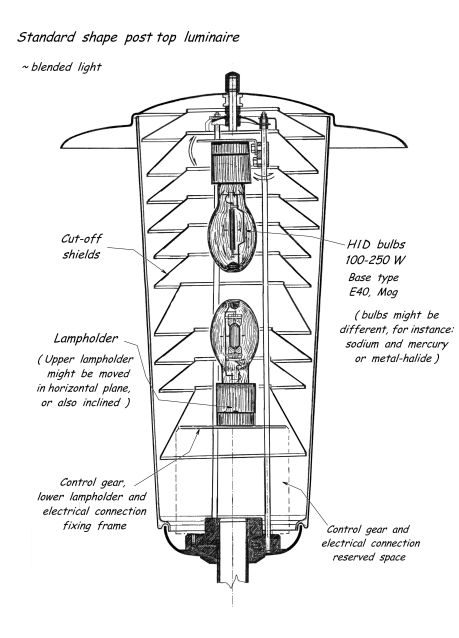
|
|
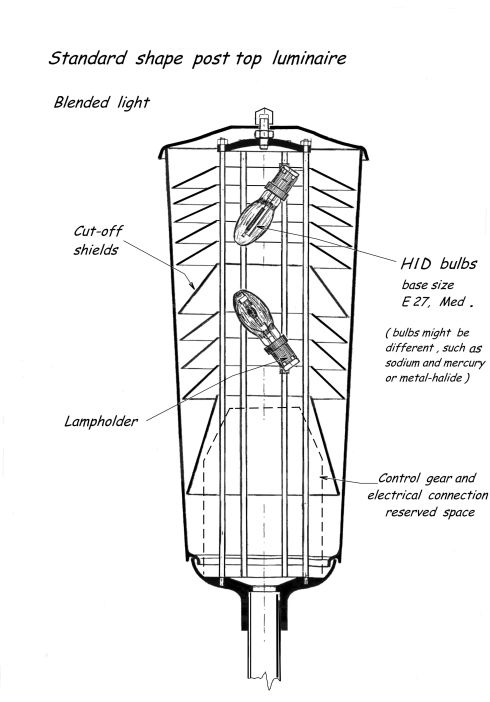
|
|
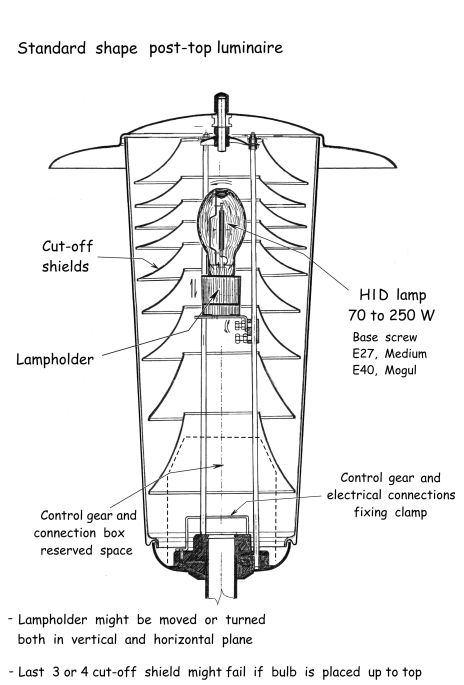
|
|
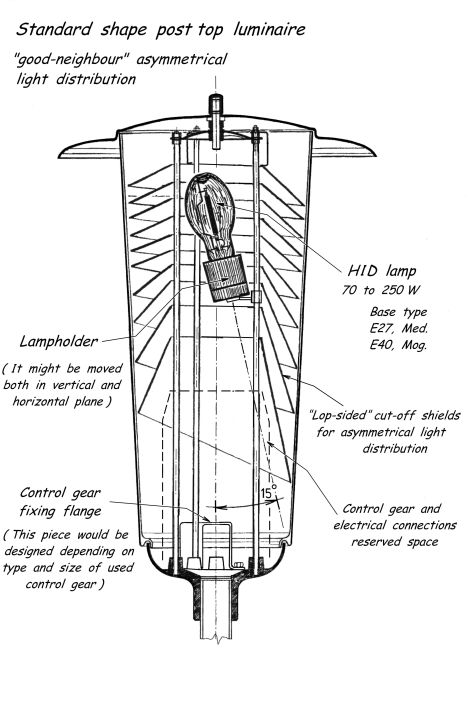
|
|
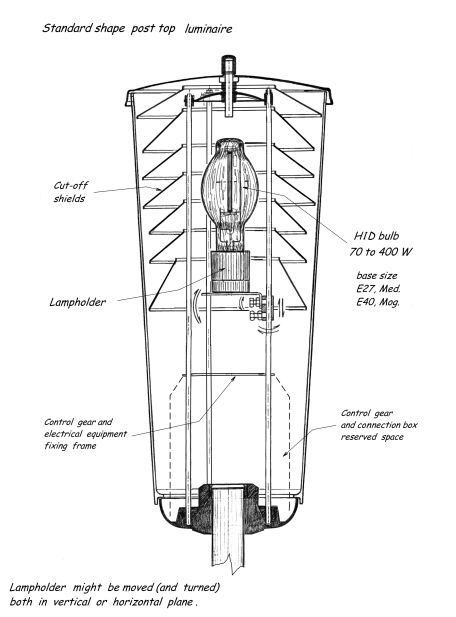
|
main page
|
Electricals © 2005 - All rights reserved
|
Support this website by joining the Silver Rails TrainWeb Club for as little as $1 per month.
Click here for info.











